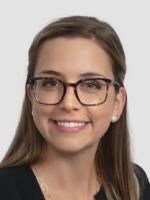The fast-changing world of college athletics is about to collide with the ever-changing doctrine of joint employment.
In January 2022, on behalf of football and basketball athletes at the University of Southern California (USC), the National College Players Association (NCPA) filed an unfair labor practice charge with the National Labor Relations Board (NLRB) against USC, the Pac-12, and the NCAA. In the charge, the NCPA argued that college athletes should be considered employees and not student-athletes. On December 15, 2022, the NLRB’s Los Angeles Region agreed. NLRB General Counsel Jennifer Abruzzo said in a statement that USC, the Pac-12, and the NCAA have together “maintained unlawful rules and unlawfully misclassified scholarship basketball and football players as mere ‘student-athletes’ rather than employees entitled to protection under our law.” In September 2021, Abruzzo issued a memo (GC 21-08) making clear that some college athletes should be considered employees.
Thus, while the General Counsel’s stance on student-athletes is not altogether surprising, this is the first time the General Counsel has formally argued that not only is USC an employer, but also, the Pac-12 and the NCAA should be considered “joint employers.” This finding, if it stands, means that other athletes in other NCAA Division I Football Bowl Subdivision schools could argue they are also employees with the right to bargain directly with a conference. Furthermore, while many publicly funded schools are likely exempt from coverage under the National Labor Relations Act (NLRA), the affiliated conference may be subject to the NLRA. If the NLRB finds a joint-employment relationship exists, those conferences could be forced to bargain. It also opens the door to potential unions that would consist of athletes from more than one school.
This high-profile case, therefore, has the potential to change long-standing NLRB precedent on joint-employment (which is already a hotly contested issue before the NLRB), student-athletes, and NLRA jurisdiction that could affect employment practices at every college institution — with every college sports fan watching.
The NCPA’s Executive Director, Ramogi Huma, expressed his satisfaction with the NLRB’s Los Angeles Region’s ruling, saying, “Gaining employee status and the right to organize is an important part in ending NCAA sports business practices that illegally exploit college athletes’ labor ….” However, the NCAA continues to hold firm that “college athletes are not employees of the NCAA, regardless of sport or division” and “the NCAA’s commitment is to student-athletes, and it will continue to vigorously defend any attempts to divide them based on arbitrary standards, as it demeans the hard work and sacrifice of all who participate in college sports.” USC issued a similar statement, vowing to present “all the relevant facts … along with 75 years of favorable legal precedent” at the appropriate time.
The next step is settlement or a hearing with an administrative law judge. The latter is the more likely path, followed by significant appellate litigation.
While there are still multiple hurdles ahead for college athletes and institutions, these pressing labor law issues present a significant challenge to the incoming-NCAA President Charlie Baker, who will take over from Mark Emmert as of March 1, 2023, as well as all collegiate institutions.





 />i
/>i
